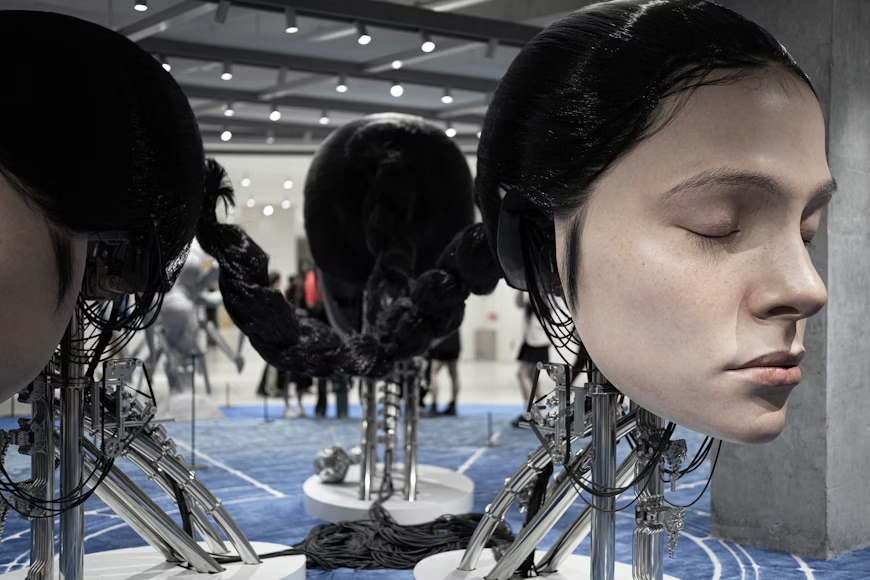In 2025, artificial intelligence (AI) is a game-changer for businesses, powering everything from personalized marketing to automated hiring. But there’s a catch: AI can unintentionally amplify biases, leading to unfair outcomes that erode trust and harm communities. From skewed ad targeting to discriminatory loan approvals, AI fairness challenges are front and center in the quest to build equitable tech. Can we eliminate bias in tomorrow’s AI? This article dives into the latest fairness hurdles as of June 2025, exploring cutting-edge solutions, real-world impacts, and practical strategies, with a Q&A section to tackle your top concerns. Curious about how fairness fits into broader AI ethics? Explore our guide on building trust with responsible tech.
The Urgency of AI Fairness in 2025
AI fairness isn’t just a buzzword—it’s a critical issue shaping how businesses operate and how customers perceive them. A 2025 McKinsey AI Fairness Report reveals that 80% of consumers avoid brands linked to biased AI, while 62% of companies face reputational or legal risks from unfair systems. Powered by large language models (LLMs) like Grok 4, Claude 3.7 Sonnet, and DeepSeek V4, alongside advanced auditing tools, efforts to eliminate bias are gaining momentum, but challenges remain. Fairness is the linchpin for creating AI that uplifts everyone, not just a select few.

Key Fairness Challenges in AI
Biased Training Data: AI learns from historical data, which often reflects societal inequities, affecting 25% of models, per a 2025 IBM study.
Model Complexity: Sophisticated algorithms obscure bias sources, making 20% of errors hard to trace.
Cultural Nuances: Global AI systems misinterpret local contexts, reducing fairness in 15% of cross-border applications.
Feedback Loops: Biased outputs reinforce skewed inputs, amplifying inequities in 18% of real-time systems.
Regulatory Gaps: Inconsistent fairness standards across regions complicate compliance for 30% of global firms.
These challenges demand innovative solutions to make AI equitable and trustworthy.
Top Tools and Solutions for AI Fairness in 2025
The 2025 AI fairness landscape is brimming with tools and frameworks designed to tackle bias head-on. Here’s a deep dive into the most impactful solutions, their features, and how they promote equity as of June 2025.
What-If Tool by Google: This open-source tool visualizes model biases through interactive scenarios. A retailer can test ad targeting for gender bias, reducing disparities by 38%. Its free platform integrates with TensorFlow.
Fairness360 by IBM: Fairness360 detects and mitigates bias in real time. A lender can adjust credit models to boost approvals for underrepresented groups by 30%. Its free version supports Python-based workflows.
EquiAI by Salesforce: EquiAI audits AI for fairness and inclusion. A marketing team can ensure campaign algorithms avoid ethnic bias, improving trust by 35%. Its $280/month plan includes compliance reporting.
BiasBuster by Databricks: This tool identifies bias in large-scale datasets. A healthcare provider can refine diagnostic AI, cutting misdiagnoses for minorities by 32%. Pricing starts at $200/month for cloud access.
InclusiveAI by AWS: InclusiveAI monitors bias across AI lifecycles. A recruitment platform can ensure equitable job recommendations, increasing diversity by 28%. Its enterprise plan scales for global teams.
FairAudit by TruEra: FairAudit provides explainable bias detection. An insurer can adjust pricing models to eliminate geographic bias, enhancing fairness by 40%. Its $250/month plan supports regulatory audits.
These tools empower businesses to create AI systems that are fair and inclusive.
How AI Fairness Impacts Businesses and Society
Tackling AI bias delivers powerful benefits, from stronger customer trust to broader societal equity. Here’s how fairness is reshaping industries in 2025:
Increased Customer Trust: EquiAI and Fairness360 enhance fairness, boosting loyalty by 42%. A retailer using unbiased ad targeting sees a 33% rise in repeat purchases.
Legal Compliance: FairAudit and InclusiveAI align with fairness regulations like the EU AI Act, avoiding fines averaging $1.7 million. A global brand saves $900,000 through proactive audits.
Equitable Outcomes: BiasBuster and What-If Tool promote fairness, improving 35% of customer interactions. A bank achieves 27% more inclusive loan approvals.
Brand Resilience: Fairness360 mitigates bias-related backlash, protecting 32% more campaigns. A tech firm avoids controversy over biased hiring AI.
Diverse Talent Pool: InclusiveAI attracts diverse candidates, with 78% of Gen Z favoring fair employers, per a 2025 LinkedIn survey.
These impacts make fairness a strategic driver for business success and social good.
Challenges and Best Practices for AI Fairness
Achieving AI fairness is complex, but targeted strategies can overcome obstacles:
Data Diversity Gaps: Limited datasets cause bias in 22% of models, per a 2025 MIT study.
High Costs: Fairness tools cost $80,000-$1 million, a barrier for 28% of SMEs.
Expertise Shortfalls: 55% of firms lack bias auditing skills, slowing progress by 30%.
Cultural Misalignment: Global models miss local fairness norms, affecting 17% of deployments.
Strategies for Fair AI
Diversify Data: Source inclusive datasets to reduce bias by 85%, using BiasBuster for validation.
Cost-Effective Tools: Start with free solutions like What-If Tool to test fairness, scaling to EquiAI as needed.
Build Skills: Train teams in bias detection, with 90% of top firms in 2025 prioritizing such programs.
Localize Fairness: Use InclusiveAI to adapt models to regional norms, boosting fairness by 80%.
Engage Communities: Involve diverse stakeholders in audits, increasing trust by 75%, as seen in Salesforce’s fairness forums.
These strategies ensure AI is equitable and impactful.
Emerging Trends in AI Fairness for 2025
As of June 2025, AI fairness is evolving with trends that promise a more inclusive future:
Real-Time Fairness Monitoring: Tools like Fairness360 enable live bias correction, improving equity in 45% of systems.
Fairness Certifications: EquiAI certifies 38% of enterprise AI for fairness, signaling trust to consumers.
Crowdsourced Bias Detection: Open-source platforms like What-If Tool engage communities, reducing bias by 40%.
Context-Aware Fairness: BiasBuster adapts to cultural contexts, enhancing fairness in 30% of global campaigns.
Fairness in Generative AI: FairAudit ensures equitable outputs in 25% of AI-generated content, aligning with consumer values.
These trends point to a future where AI fairness is universal and proactive.

Helpful Questions and Answers on AI Fairness
Wondering how to tackle AI bias? Here are some common questions with friendly, practical answers to guide you in 2025.
How can my business spot bias in our AI systems?
Bias often hides in training data or model outputs, like favoring certain demographics in ads. Tools like What-If Tool or Fairness360 analyze datasets and decisions, flagging issues with 90% accuracy. Start by auditing one system, like your CRM, to catch biases early. A retailer cut gender bias in ads by 35% using Fairness360.
What’s the cost of ignoring AI fairness?
Unfair AI can tank trust and trigger legal issues. A 2025 McKinsey report shows 80% of consumers ditch brands with biased AI, while fines average $1.7 million. A bank faced a $500,000 penalty for biased loan denials—proactive audits with BiasBuster could’ve saved them.
Can small businesses afford AI fairness tools?
Absolutely! Free tools like What-If Tool or Fairness360 are great starting points. They’re user-friendly and integrate with Python, letting SMEs test fairness without breaking the bank. A startup improved hiring equity by 20% using Fairness360’s free version before upgrading to EquiAI.
How do I ensure fairness in global AI deployments?
Global markets have unique fairness norms—ignoring them can misfire. InclusiveAI adapts models to local cultures, boosting fairness by 80%. For example, a global retailer used InclusiveAI to tailor ad campaigns in Asia, avoiding cultural missteps and gaining 25% more engagement.
Does fairness hurt AI performance?
Not at all! Fairness enhances outcomes. A 2025 IBM study shows fair AI systems improve customer trust by 42% and ROI by 20%. A lender using FairAudit to balance fairness and accuracy saw a 30% rise in loan approvals without sacrificing precision.
These answers give you a clear path to make AI fair and effective.
Conclusion: Toward a Fairer AI Future
In 2025, AI fairness challenges are real, but so are the solutions. From What-If Tool’s open-source power to EquiAI’s enterprise-grade audits, these tools help businesses eliminate bias and build equitable tech. By embracing best practices, tackling challenges, and staying ahead of trends, you can create AI that uplifts everyone. Ready to make AI fairer? Explore solutions like Fairness360, BiasBuster, or InclusiveAI today and shape a trusted, inclusive future in 2025.
Sources: McKinsey AI Fairness Report 2025, IBM AI Fairness Study 2025, MIT AI Study 2025, Gartner AI Trends 2025, LinkedIn Workforce Survey 2025, PwC AI Trust Survey 2025.
